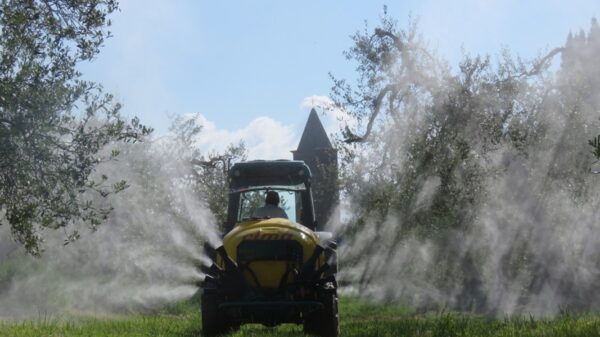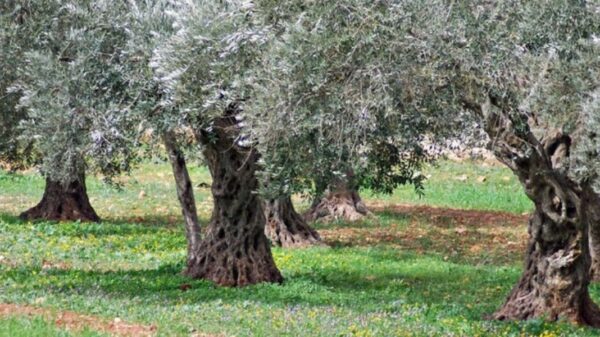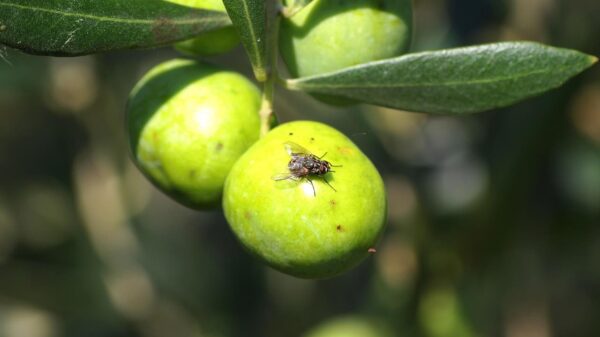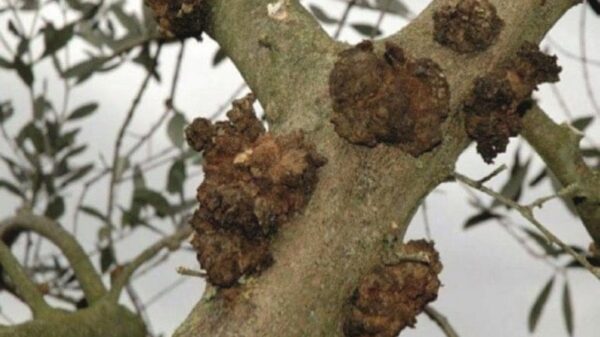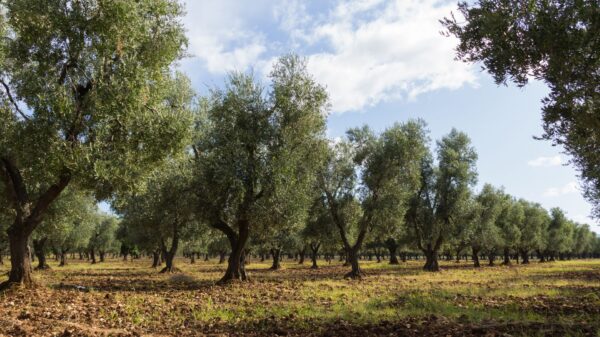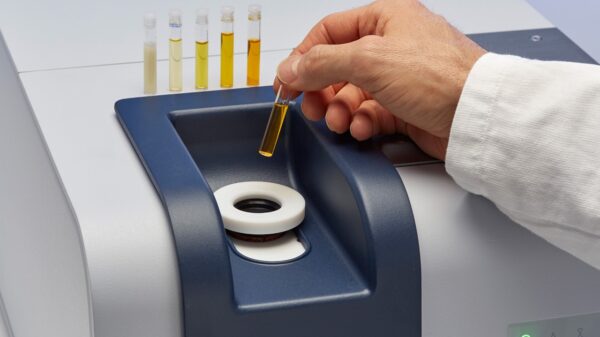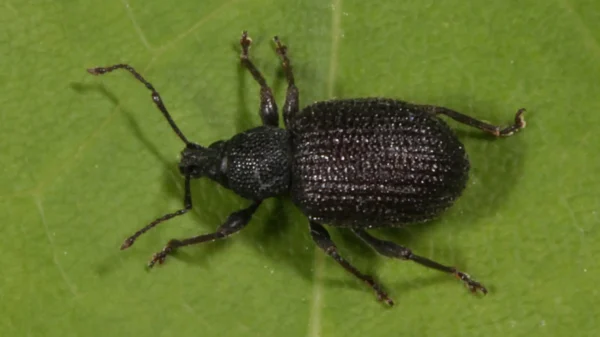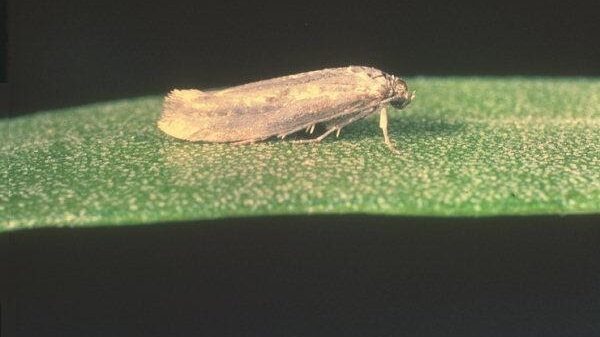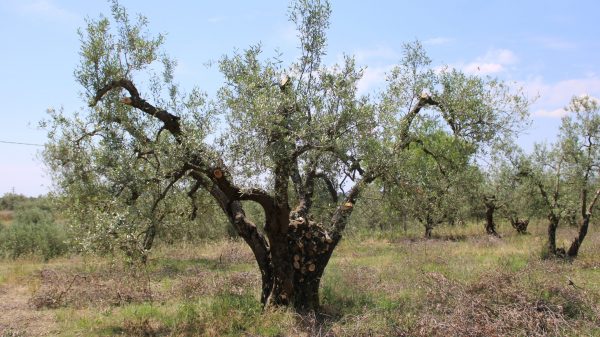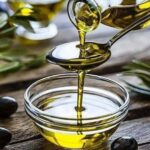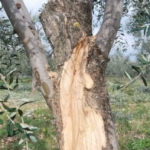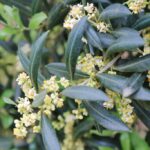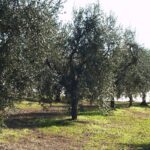The latest generation of Olive fly, which occurred between October and November last year, thanks to a mild winter, it did not suffer any particular damage from the cold; it overwintered as an adult, either as a pupa in the soil, or as a larva in olives that had fallen to the ground or remained unharvested on the plants.
Olive tree fly in spring
Now the temperatures are rising, we have entered spring and the olive fly has started to fly among the olive trees. Being an ectothermic insect, i.e. capable of adapting its body temperature to the external temperature, it has the advantage of easily adapting to continuous thermal variations which characterize the beginning of the summer. In this way the fly manages to have a normal metabolism, even in the presence of temperatures that are not entirely optimal, and if it finds olives still present among the olive branches it can lay eggs.
If the thermal conditions of the period allow it, it will be possible to have one or two spring generations. The severity of subsequent infestations Moscow summer on olives, which will begin in July with olives in the swelling stage, it will depend, as well as by wintering individuals, too by the numerous spring vintage specimens.
To lower the population it will be then appropriate, when the plants are pruned, remove all the olives still present in the hair. Who then uses attract and kill traps, with priming properties lasting 180 days, it is advisable that will be exhibiting as early as April, hanging them from half a crown, about one and a half meters from the ground.
Insecticides allowed
With growing olives, contrasting olive fly are available two insecticides, admitted in the integrated defense regulations.
One is theacetamiprid, has a toxic action towards adults and eggs, limited to larvae, acts by ingestion and by contact, first causing muscular paralysis and then death. It takes effect for approximately 10 – 13 days and is only two interventions per year allowed, regardless of adversity.
The other agrochemical is the Flupyradifurone, a compound developed by Bayer CropScience, is marketed under the name of “Sivanto prime”. It acts similarly to Acetamiprid, it is a good killer of adults and eggs, but it has limited larvicidal efficiency, retains an insecticidal effect for about ten days and can be used for only one treatment a year regardless of adversity.
The importance of prevention
Given the limited larvicidal capacity of these two products, the insecticidal defense against the olive fly must consequently focus on prevention so much so that, at the appearance of the first stings of oviposition and with no more than 2% active infestation, an initial phytosanitary intervention should be implemented, so as to limit the adult population and, consequently, the presence of very early eggs and larvae.
Preventive action is also carried out by attractive baits with protein substances: they have a knockdown action thanks to insecticides present, which could be the spinosad or Cyantraniliprole (Exirel Bait), or Deltamethrin o acetamiprid o Lambda Cyhalothrin.
They also have a preventive action on the external surface of the olive rock dust, such as bentonite, kaolin, chalk, talc, Zeolite, whose mechanism of action against the olive fly is physical as, once distributed, they form a film repellent to the dipteran. The fly, in fact, is attracted to the green of the olives and the rock dust, with its whitish soiling action, veils its colour, so much so that the dipteran struggles to recognize them as an ideal place for oviposition.
Among the prevention actions, the following should also be considered: cupric products, which have no direct effect against the adult or larvae of the olive fly, but they act as bacterial against bacteria present on the epidermis of the olives, which attract the fly representing a food. The action of copper also has a negative effect on the bacteria that colonize the intestine of the adult and the olive fly larva. This mechanism is little known but appears to produce mortality in the very first larval stages.
The preventive containment role of the olive fly is, therefore, a method which, to be effective, must contain multiple actions and be very timely.
Manager AIPO
Interregional Association
Olive producers
Browse for free Olive News click , here.
